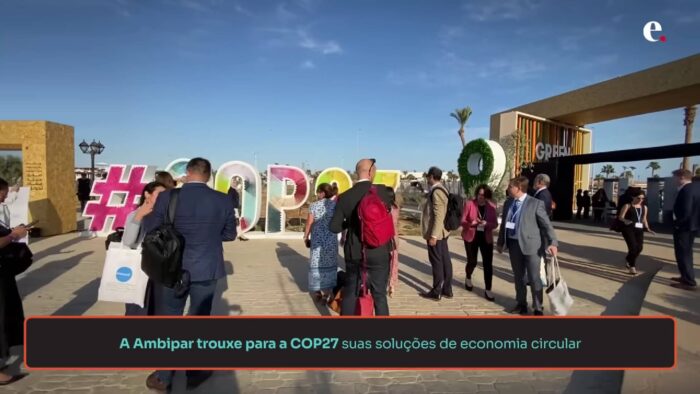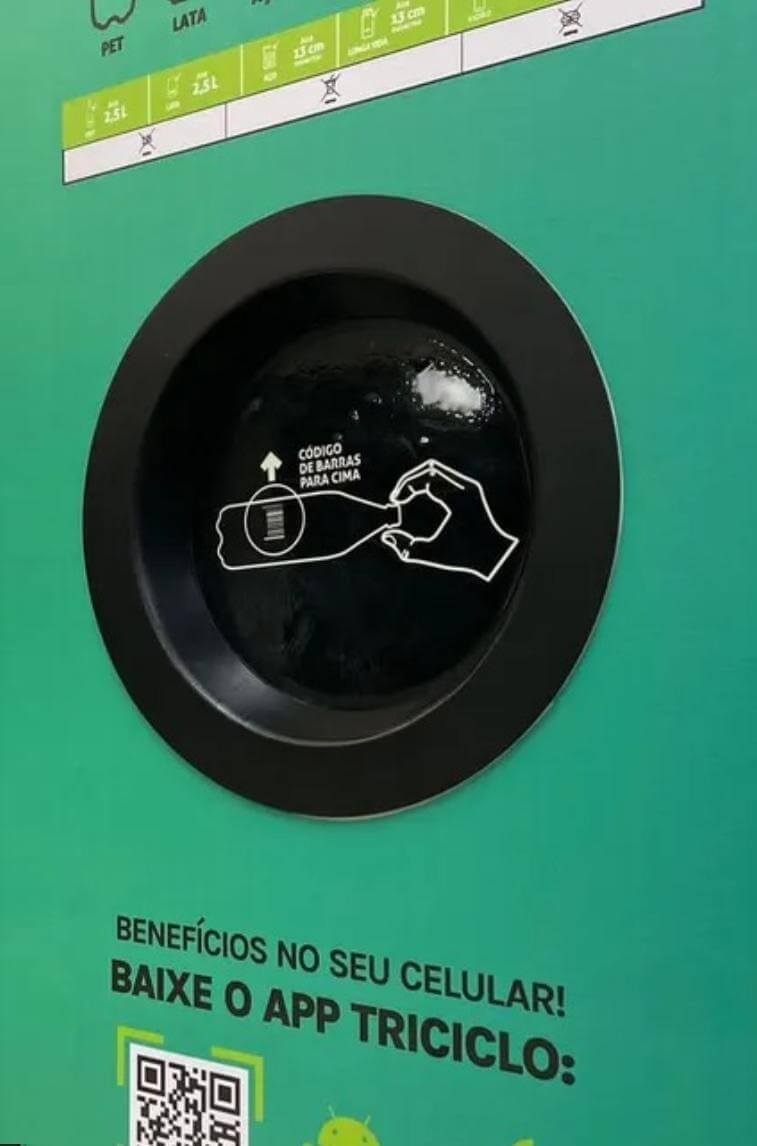Exame by Sharm el-Sheik - 11/25/2022

By Writing Team
Posted in December 22, 2022

EXAME spoke with companies operating in Brazil in different sectors; check out their participation at COP27 and understand the strategies of sustainability, bioeconomy, clean energy and more.
Executives from companies operating in Brazil are in force at COP27, the Conference of the Parties for climate change. Around here, they share good practices and start businesses while closely monitoring the decisions of official delegations.
“This is the year to affirm the implementation processes in the reduction of emissions, looking at the climate perspective, but this is still not so clear on the part of the delegations. It is time for the private sector to charge for implementations”, said Cristiano Teixeira, CEO of Klabin.
According to him, Klabin sees its growth when seeking to use the land with the aim of planting cultivated forests. “We are from a sector that follows the regulations, and once we enter a region, we guarantee the development of the HDI of the municipalities”.
Executives also understand that progress takes time. “The COP is nothing more than sitting down and working together, and that takes time. Consensus is needed, and the COP advances every year. When looking at forests, there is still a lot to be done, as it is a subject that is not in the regulated market, and can be an important source of financing for Brazil”, says David Canassa, director of Reservas Votorantim.
The executive recalled that, around here, companies take the opportunity to launch initiatives such as the company Biomas, which in 20 years should allocate 4 million hectares of native forests in the Amazon, Cerrado and Atlantic Forest to be restored and protected. “In addition, it is necessary to reinforce that protecting the forest depends on the inclusion of people who live in the localities so that together everyone can benefit from this process”.
partners
Partnerships between Brazilian companies also happen in the fashion sector. An example of this comes from Malwee and Lojas Renner. “We are talking to Lojas Renner to better understand how to mitigate greenhouse gas emissions in Scope 3, indirect emissions, the great challenge of all sectors”, says Taise Beduschi, sustainability manager at the Malwee Group.
This requires consistency and transparency in actions. “Our work is based on environmental sustainability and human rights. Here, in addition to promoting exchanges, we show the evolution of cycles and the work model that stands out for its consistency,” says Eduardo Ferlauto, head of sustainability at Lojas Renner S.A., who presented results such as the use of renewable energy in 100% of corporate operation and the 35.4% reduction in absolute corporate CO2 emissions compared to 2017.
Helping companies to become more sustainable is also Ambipar’s goal. “We bring our circular economy solutions to help companies reduce their emissions, generate, offset and trade carbon credits. Today, we are thinking about this decarbonization strategy in a much broader way, connected with our ambitions, taking internal and external actions to be able to turn this into reality”, said Rafael Tello, sustainability director at Ambipar Group.
SBTi
To prove that actions are on the right track, companies work with audits, monitoring of results and initiatives such as Science Based Targets, a collaboration between CDP, the United Nations Global Compact, the World Resources Institute and the World Wide Fund for Nature, for setting a science-based climate target.
In addition to Lojas Renner, another company that is on the SBTi is the beverage manufacturer Ambev. “We work at SBTi considering the three scopes of emissions. We reached the goal we proposed for 2025, towards NetZero, and we have other challenges”, says Rodrigo Figueiredo, vice-president of sustainability and supplies at Ambev.
An example of Ambev is the relationship with customers. “There are more than 1 million customers with our refrigerators. For this reason, we work with ecocoolers, which emit less carbon, and we already have more than 4,000 points of sale with renewable energy, and it is possible to expand throughout the country in the coming years”.
Marfrig also established, four years ago, emission reduction targets, which were submitted to the SBTi. “Here we bring a little of what we obtained in terms of results and address the importance of having the science behind what is established as a goal. This is how transparency is ensured for what is being done”, says Paulo Pianez, director of sustainability and corporate communication at Marfrig.
socioenvironmental challenges
Since 2009, Fundação Grupo Boticário participates in the COP in person to guide work in Brazil and to present experiences of what is already being developed in the country. “Here, our focus is on how services based on nature can help address society’s challenges, thinking about climate change, an urgent topic that needs to be addressed locally”, says André Ferretti, manager of biodiversity economics at Fundação Grupo Boticário.
An example that the discussion started at the COP can generate local initiatives is Sigma Lithium. “At the last COP, held a year ago in Glasgow, we thought of a project based on a conversation about sustainable family farming and climate adaptation”, says Ana Cabral, co-CEO of the company.
From there, work was carried out to collect rainwater, which remains in the soil itself and has a low carbon footprint. “During the rainy season, large volumes of water are captured and then we can make it available to family farmers who would have problems with the drought”, says Ana.
In addition, she sees combating socio-environmental problems as important for the business. “Shareholders are waiving return for a greater cause by, for example, increasing municipal collection through a resource that the company made in the Jequitinhonha Valley”.
Sanitation treatment in Brazil is another example of generating direct impacts on people’s lives and the environment. “Treating sewage means preventing tons of raw sewage from being dumped into oceans and rivers. And there is also a huge impact on the generation of jobs and movement in the local economy. In Maceió, for example, there were 1,200 direct and indirect employees in six months”, says Teresa Vernaglia, CEO of BRK.
Energy
One of the major themes of COP27 is how clean energy will favor the planet’s decarbonization mechanisms, in addition to, obviously, the necessary financing for a fair energy transition.
With an eye on this movement, Paula Kovarsky, vice-president of strategy and sustainability at Raízen, hopes that Brazilian solutions for the use of ethanol will be more valued. “We are increasingly expanding the offer of renewable products with efficiency in land use, without adding hectares. And there is a journey of possible evolutions. We use 1% of the territory to plant sugarcane, but we account for 19% of the country’s energy matrix”.
For Gustavo Montezano, president of BNDES, the energy issue is one of the main points of COP27. “We are observing how the topic is urgent and moves the business sector. Because of this we are, for example, buying 100 million reais in carbon credits and receiving 500 million in demand, he says.
